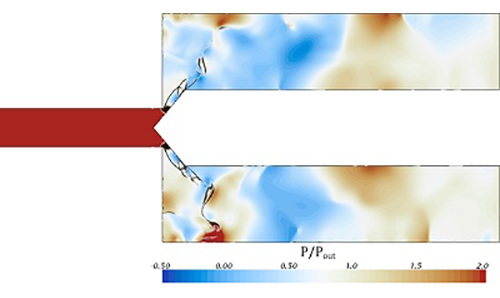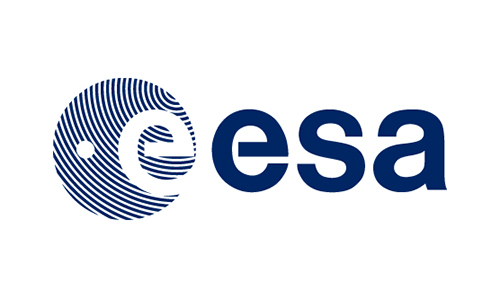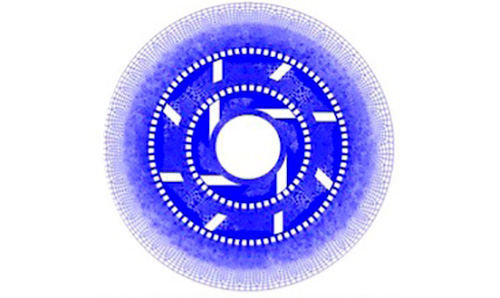
Research for your business
We’re constantly looking to find ways for our research to make a beneficial impact in the real world by working with business.
A number of bodies offer funding for original research and technical innovation to help your business reach its goals and potential.
From small to medium enterprises, to charity organisations, to large global corporations or public institutions, we welcome enquiries for collaboration that will help us address society's challenges.
There are a variety of ways that you can engage with our experts - whether via commissioned research, collaborative or sponsored work, or student projects for research and development.
Your organisation could really benefit from our wealth of knowledge, novel solutions and fantastic facilities. Explore our work further before getting in touch.
Case studies
Industry collaboration funding allows UK research organisations to speed up the real world impact of academic research, and our past successes in this regard are illustrated by the following case studies.
BAE Systems
Aircraft traditionally use moving surfaces such as flaps to control how they move through the air. Work at The University of Manchester has been looking at how these moving controls can be replaced by the blowing of compressed air from and over specially contoured parts of the wing and engine nozzle to generate control forces and moments without changing the shape of the aircraft.
Over the last 12 years there have been eight separate Industrial CASE awards with BAE Systems at The University of Manchester working towards the goal of a fully flapless aircraft. This work has pushed the boundaries of what is considered possible in this area through a series of wind tunnel trials, computational fluid dynamics and free flight testing of model scale aircraft.
The partnership has benefited BAE Systems through relatively low cost development of innovative technologies in a creative University environment. The University has greatly benefited from access to industrial leadership and understanding of wider constraints affecting commercial application of the technologies developed.
EDF Energy

The Department of Mechanical, Aerospace and Civil Engineering is involved in a Knowledge Transfer Partnership (KTP) with EDF to develop a system which will detect faults in main turbine governor valves to prevent them failing. At present, failures in turbine governor valves result in a significant loss of energy generation during repairs, in addition to the cost of the repairs themselves.
The project, which aims to embed and exploit the capability to enable early stage fault detection by developing condition monitoring technology and standard test procedures is likely to eliminate these faults and facilitate benefits gained from increased on load time. This improvement in energy generation is estimated to save EDF more than £3 million per year, as a result of reduced down time.
This development research involves both computational fluid dynamics analysis and in-situ vibration measurements of the governor valves, and allows the Department to put theory to the test and engage in the solution of real industrial issues.
The scheme has provided a bridge between industry and academia and facilitates a meaningful interaction which enables knowledge transfer between the two parties. This, in turn, helps to generate joint innovations and new ideas, and offers a unique personal development opportunity to all involved.
European Space Agency

The Department of Mechanical, Aerospace and Civil Engineering is involved in a research project funded by the European Space Agency (ESA) under their Network Partnership Initiative developing advanced techniques for aerodynamic assessment of blunt bodies in hypersonic flow.
MACE is working with the ESA on the European Clean Space Initiative to develop comprehensive tools for the prediction of satellite breakup during Earth atmosphere re-entry.
This exciting collaboration enables the Department to develop experimental techniques in the area of high speed aerodynamics, provides the ESA access to our high-speed supersonic wind tunnel data and facilitates the development of novel high-speed supersonic tunnel techniques for the investigation of satellite breakup during re-entry.
Innovate UK
Three Department of Mechanical, Aerospace and Civil Engineering projects were funded through a competitive call from Innovate UK on "Developing the Civil Nuclear Supply Chain". These considered theoretical and experimental aspects of irradiation damage, mechanical behaviour, and fracture. The value of these three projects to the University was £1.6m out of a total budget in excess of £3.5m.
Project overview
The graphite core in nuclear Advanced Gas-cooled Reactors (AGRs) provides channels for fuel positioning and cooling, and shut-down/control rod insertion. As the reactors age, the graphite within the core degenerates, leading to the local cracking of components. As a consequence damage tolerance assessments are needed to establish whether an adequate margin remains for the integrity of the fuel and proper behaviour of the safety systems.
The development of reliable numerical tools was needed for safe plans for life extension of the reactor fleet. In addition, the outcomes would aid design and expected lifetimes for the next generation of nuclear plants.
Project outputs
A numerical tool was developed that predicted the crack shape in 3D from the complex geometry of a fuel brick. It was written in an open source code (Code_Aster) meaning that it is available to the whole scientific community. It looks at the energy and stress state ahead of the crack tip and predicts the crack path.
To aid more reliable constitutive relationships as input for stress calculations, a world-first experiment was performed at the Diamond Light Source, a synchrotron X-ray source just outside Oxford, where the coefficient of thermal expansion of irradiated graphite was measured under load. This key parameter is needed to better understand the change in conditions between running the reactor and shutting it down for inspections. This helped provide greater confidence on the predictions of damage progression in the reactor core, leading to safer claims for life extension.
Unilever

The Department of Mechanical, Aerospace and Civil Engineering is working with Unilever in the manufacture of fast moving consumer goods - typical examples of which include mayonnaise and shampoo. A defining character of these products is their non-Newtonian behaviour.
A striking example of non-Newtonian behaviour can be found in corn starch (you can find an example on YouTube). From an industrial point of view, the mixing of ingredients in a non-Newtonian fluid is a challenge; traditional process design relies on the scale-up of laboratory based product manufacture, and scale-up rules often do not work with non-Newtonian fluids.
MACE is helping to develop manufacturing process design through Computational Fluid Dynamics (CFD). Through the application of high performance computing, turbulence modelling and CFD, we're able to predict quantities such as power consumption and mixing quality. These predictions feed directly into process control and inform the design of newer, more efficient mixers.
This research is funded by the EPSRC's Impact Acceleration Account.

